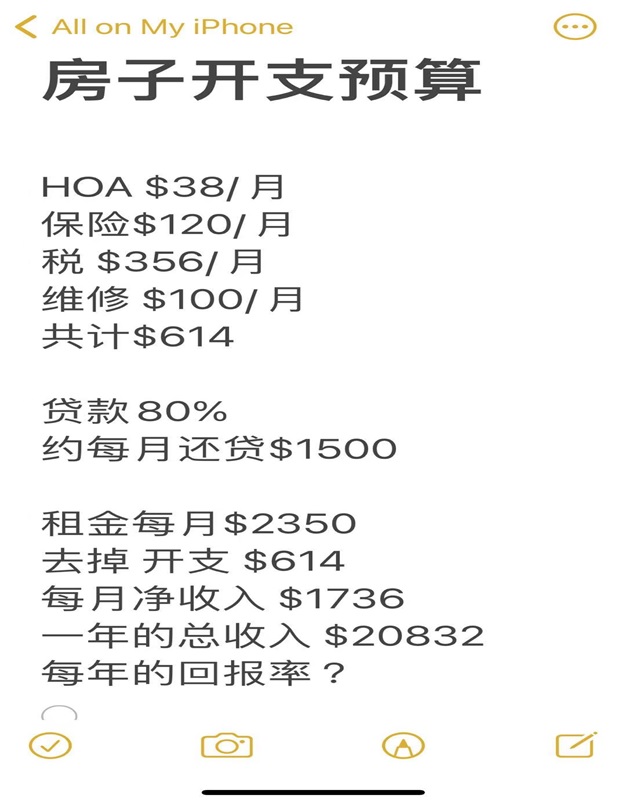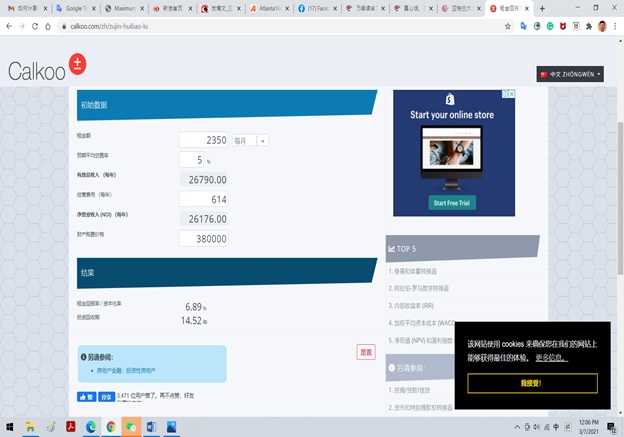
We Asked Our Experts: Do You Need a Trust?
By Charles Schwab
6/06/2021

Basic estate planning usually starts with a will, which deals not only with your property but also with important decisions such as who will care for minor children if both parents are deceased. But wills aren’t necessarily the best, final option for every estate, especially given the legal proceedings that must occur before any assets are distributed.
That’s where a trust can help.
What is a trust?
A trust is basically a fiduciary arrangement that specifies how your assets will be distributed at the time of your passing, usually without the involvement of a probate court. Unlike a will, a trust isn’t subject to public scrutiny and can be arranged to accomplish a variety of different goals.
For example, you can use a trust to transfer property, help minimize estate taxes, preserve assets for minors until they are adults, or benefit a charity.
One caveat is that drawing up a trust can be expensive, especially for more complex estates. Some attorneys might offer a basic trust package for a flat fee, but the bill can add up quickly if you and your attorney need to spend a lot of time discussing your goals before the trust agreement is drafted. So, it makes sense to do some planning beforehand. Knowing what assets you’d like to put in a trust and how you’d like them to be distributed can help simplify the process.
To learn more about the benefits and drawbacks of trusts, as well as the ways in which Schwab can help clients work through their estate planning needs, we talked with three Schwab professionals: Brad Reeves, a senior financial consultant from Austin, TX; Lauray Kennedy, a Schwab financial consultant from Houston, TX; and Travis Loseke, a Schwab Private Client senior team manager from Orlando, FL.
Q: Why would someone consider a trust?
Travis: The true appeal of a trust is the ability to control how your assets are managed both during and after your lifetime. This feature tends to be particularly appealing for people with special circumstances, such as those who are caring for a child or family member with special needs, or managing succession planning for a closely held business. A trust even allows you to specify certain conditions that must be met in order for a transfer of assets to be completed.
Brad: In a word: specificity. A trust allows you to be very specific about how, when and to whom your assets are distributed. On top of that, there are dozens of special-use trusts that could be established to meet various estate planning goals, such as charitable giving, tax reduction and more.
Q: Why not just create a will instead?
Lauray: Wills have two big shortcomings: Assets may have to go through probate—this can be a lengthy and often expensive legal process of validating a will and settling an estate—and, as a result, they become public documents that could be scrutinized or contested. A trust can help in both of these circumstances because any assets held in a trust can typically be managed by the successor trustee in a more private manner than a typical probate proceeding.
Brad: Many people draft wills with trust provisions, otherwise known as “testamentary trusts.” These work in much the same way as other trusts, except that by their very nature they may have to go through the probate process. This means the probate court could choose to distribute the deceased’s assets in a way that differs from her or his original intentions. A living or “inter-vivos” trust, on the other hand, allows the owner to plan during his or her lifetime, thereby bypassing the probate process and controlling decisions related to the distribution of assets.
Q: Do certain types of trusts make sense for most people?
Travis: Revocable living trusts tend to be the most flexible option. With this type of trust, you transfer ownership of some or all of your property into the name of the trust, but you maintain the same level of control over the assets that you had before. In essence, you give up nothing and while gaining the assurance that your wishes can be carried out if something happens to you.
Lauray: A living trust is a lot like a “regular” account in that you still have control over your assets. You can buy, sell and trade assets as you normally would. You’re able to move assets into and out of the trust at your discretion. The key difference is that you can put additional controls and designees in place to help protect your assets should you pass away or become incapacitated.
What is a revocable trust?
A revocable trust is a trust that can be changed at any time and in any way during the owner’s lifetime, up to and including total revocation.
What is an irrevocable trust?
An irrevocable trust is one that cannot be changed or revoked after the agreement has been signed. A revocable trust becomes irrevocable upon the death of the original trust owner.
The benefit of an irrevocable trust is that, when certain conditions are met, the assets can be removed from the trustee’s estate, thereby potentially reducing the estate’s value and its associated estate tax liability. Assets held in a revocable trust, on the other hand, are considered part of the original owner’s estate.
Q: Are there any disadvantages to trusts?
Brad: I’d call them trade-offs. For example, a trust can be more expensive and complicated to draft than a will. Sitting down with an estate planning attorney can be very expensive, particularly if you don’t know what you want or need from the trust.
You could end up paying thousands of dollars just to talk through your situation, not including the additional fees to actually draft the documents. However, incurring additional costs on the front end could save your heirs a significant amount of money on the back end by avoiding the probate process.
Lauray: There are also ways to bypass some of these costs, particularly through the planning process. Understanding these trade-offs and determining your needs and goals will serve you well once you’re ready to engage an estate planning attorney.
Q: How can Schwab help clients with their estate planning and trust needs?
Travis: We help clients think through things they may not have considered. For example, if a client came to me thinking he needed a trust, I would get him to take a step back and consider what he’s trying to achieve with his estate plan in general and how a trust would support that plan.
It’s not about discussing the merits of a particular account or strategy; it’s about understanding the client’s needs and helping them think through the best path forward.
Lauray: As a financial consultant, it’s my job to help clients think through their estate planning needs at the highest level: What does their estate look like? Who will inherit their assets? What are they trying to accomplish?
Brad: Schwab doesn’t provide tax or legal advice. However, I can educate clients on the estate planning process and provide insights and considerations in order to help them have a successful meeting with their estate-planning attorney.
Trusts can be expensive to draft. Working through the details ahead of time could potentially save significant time and money in the long run. Schwab can also set up trust accounts for clients and help coordinate between other accounts—depending on the client’s overall investment goals and preferences.
Naming Trustees
When you set up a revocable living trust, you generally have a few choices to make about who will serve as trustee when you’re gone. It’s an important role. Trustees manage the assets in the trust on behalf of the beneficiaries. They also have to make sure all the outstanding bills and taxes are paid, in addition to other official matters.
You can name a single person to serve as a trustee—some people name their spouse—or even a group of several people whom you can designate to serve in order of preference. You can also name two people to serve as co-trustees, though this generally means the two will have to agree on every decision. Lastly, you can designate a corporate trustee at a bank or trust company.
No matter who you name, it’s important to involve your trustee in the process early on so he or she will be prepared to step in when the time comes. Trustees need to understand how the trust is structured and what their duties will be. They should also know where all the assets are.
Having this kind of clarity can make your trustee’s work easier and help head off potential disputes between beneficiaries down the line.
What you can do next
- Ready to get started on setting up a will or trust, or just to explore your options with an expert? Talk to us about your goals and the services that are right for you. Call us at 800-355-2162, visit a branch, or find a consultant.
- Learn more about Schwab Personal Trust Services.
如何计算一个投资房产的租金回报率?
By Willy Rong
3/07/2021

一直以来都有人问我,如何计算一个投资房产的租金回报率?我答过,但总是似是而非。
今天就这个问题给出我的计算公式Return Of Investment (ROI),仅供大家参考。
这个问题要从两方面讨论,看你是全额现金买房?还是贷款80% 买房?
(全额现金买投资房产)租金回报率 = (12月的租金 – 一年的各种花费)/ 买房价
(贷款80%买投资房产)租金回报率 = (12月的租金 – 一年的各种花费和贷款 )/ (
20%首付+ Closing Cost )
我们还是以一个$38万美元买房实例来计算,比较直观:
房子开支预算:
HOA $38/月; 保险 $120/月; 税 $356/月; 维修 $100/月。
共计 $614。
贷款 80%, 约每月还贷$1500;
租金每月$2350;去掉开支 $614; 每月净收入 $1736;
一年的总收入 $20832。

问:一个$38万美元的房产,每年的回报率?
(全额现金买投资房产)租金回报率 = (12月的租金 – 一年的各种花费)/ 买房价
$38万美元房子的租金回报率 = 一年的总收入 $20832 / 买房价$380,000 = $0.0548
全额现金$38万美元房子的租金回报率一年约为:5.5%;
(贷款80%买投资房产)租金回报率 = (12月的租金 – 一年的各种花费和贷款 ) / (
20%买房首付 + Closing Cost)
$38万美元贷款80%房子的租金回报率 = (一年的总收入$20832 – $18000) / (首付 $
76000 + $5000 Closing Cost ) = $0.0349
$38万美元贷款80%买投资房产的租金回报率一年约为:3.5%.
这个$38万美元的房子在最好学区,房子升值潜力大!
考虑到加上房子产权equity 上涨的因素,一年在6%-8%。所以要加上一个Equity 增值
率,换句话说,是用$81000 买了一个$38万美元的房产,是用杠杆买的房子。
这里有2个概念:一个是租金回报率;一个是Equity 回报率;
利用杠杆买房,就要让银行在这个房子上也赚一些钱,所以贷款租金回报率3.5%.要低
于全额现金租金回报率5.5%,这个逻辑是对的,那个2% 回报率的差让银行赚去了。
什么是智慧?智慧就是解决问题的能力!
能够把一个复杂问题简单化,用直白的方式讲清楚,这也是智慧。
现在亚特兰大地区(佐治亚),一个房子的租金回报率大概在3% ~ 6%左右,真心话,
投资房净租金回报率6%是一个不错的回报。
你若嫌上面二手房一年的租金回报率还低,你可以全现金买126包租5年的项目,一年的
租金回报率为净6%。
下面是在网上找到的租金回报率计算器,大家可以去练习:
租金回报率
https://www.calkoo.com/zh/zujin-huibao-lu

提示:算大账不算小账,可能公式不够严谨,但逻辑是对的。
Source: http://www.mitbbs.com/article_t/Georgia/31320547.html
Six Spaces Home Staging

Contact: Hongliang Zhang
Tel: 571-474-8885
Email: zhl19740122@gmail.com
How to Calculate ROI on a Rental Property
Why it’s important to know a property’s ROI before buying real estate
By JEAN FOLGER
3/07/2021
One of the main reasons people invest is to increase their wealth. Although the motivations may differ between investors—some may want money for retirement, others may choose to sock away money for other life events like having a baby or for a wedding—making money is usually the basis of all investments. And it doesn’t matter where you put your money, whether it goes into the stock market, the bond market, or real estate. https://66fb8f8f96c41eb6be84c3a0428532d2.safeframe.googlesyndication.com/safeframe/1-0-37/html/container.html
Real estate is tangible property that’s made up of land, and generally includes any structures or resources found on that land. Investment properties are one example of a real estate investment. People usually purchase investment properties with the intent of making money through rental income. Some people buy investment properties with the intent of selling them after a short time.
Regardless of the intention, for investors who diversify their investment portfolio with real estate, it’s important to measure return on investment (ROI) to determine a property’s profitability. Here’s a quick look at ROI, how to calculate it for your rental property, and why it’s important that you know a property’s ROI before you make a real estate purchase.
KEY TAKEAWAYS
- Return on investment (ROI) measures how much money, or profit, is made on an investment as a percentage of the cost of that investment.
- To calculate the percentage ROI for a cash purchase, take the net profit or net gain on the investment and divide it by the original cost.
- If you have a mortgage, you’ll need to factor in your downpayment and mortgage payment.
- Other variables can affect your ROI including repair and maintenance costs, as well as your regular expenses.
What Is Return on Investment (ROI)?
Return on investment measures how much money, or profit, is made on an investment as a percentage of the cost of that investment. It shows how effectively and efficiently investment dollars are being used to generate profits. Knowing ROI allows investors to assess whether putting money into a particular investment is a wise choice or not.
ROI can be used for any investment—stocks, bonds, a savings account, and a piece of real estate. Calculating a meaningful ROI for a residential property can be challenging because calculations can be easily manipulated—certain variables can be included or excluded in the calculation. It can become especially difficult when investors have the option of paying cash or taking out a mortgage on the property.
Here, we’ll review two examples for calculating ROI on residential rental property: a cash purchase and one that’s financed with a mortgage.
The Formula for ROI
To calculate the profit or gain on any investment, first take the total return on the investment and subtract the original cost of the investment.
Because ROI is a profitability ratio, the profit is represented in percentage terms.
To calculate the percentage ROI, we take the net profit, or net gain, on the investment and divide it by the original cost.
For instance, if you buy ABC stock for $1,000 and sell it two years later for $1,600, the net profit is $600 ($1,600 – $1,000). ROI on the stock is 60% [$600 (net profit) ÷ $1,000 (cost) = 0.60].
Calculating ROI on Rental Properties
The above equation seems simple enough, but keep in mind that there are a number of variables that come into play with real estate that can affect ROI numbers. These include repair and maintenance expenses, and methods of figuring leverage—the amount of money borrowed with interest to make the initial investment. Of course, financing terms can greatly affect the overall cost of the investment.
ROI for Cash Transactions
Calculating a property’s ROI is fairly straightforward if you buy a property with cash. Here’s an example of a rental property purchased with cash:
- You paid $100,000 in cash for the rental property.
- The closing costs were $1,000 and remodeling costs totaled $9,000, bringing your total investment to $110,000 for the property.
- You collected $1,000 in rent every month.
A year later:
- You earned $12,000 in rental income for those 12 months.
- Expenses including the water bill, property taxes, and insurance, totaled $2,400 for the year. or $200 per month.
- Your annual return was $9,600 ($12,000 – $2,400).
To calculate the property’s ROI:
- Divide the annual return ($9,600) by the amount of the total investment, or $110,000.
- ROI = $9,600 ÷ $110,000 = 0.087 or 8.7%.
- Your ROI was 8.7%.
ROI for Financed Transactions
Calculating the ROI on financed transactions is more involved.
For example, assume you bought the same $100,000 rental property as above, but instead of paying cash, you took out a mortgage.
- The downpayment needed for the mortgage was 20% of the purchase price, or $20,000 ($100,000 sales price x 20%).
- Closing costs were higher, which is typical for a mortgage, totaling $2,500 up front.
- You paid $9,000 for remodeling.
- Your total out-of-pocket expenses were $31,500 ($20,000 + $2,500 + $9,000).
There are also ongoing costs with a mortgage:
- Let’s assume you took out a 30-year loan with a fixed 4% interest rate. On the borrowed $80,000, the monthly principal and interest payment would be $381.93.
- We’ll add the same $200 per month to cover water, taxes, and insurance, making your total monthly payment $581.93.
- Rental income of $1,000 per month totals $12,000 for the year.
- Monthly cash flow is $418.07 ($1,000 rent – $581.93 mortgage payment).
One year later:
- You earned $12,000 in total rental income for the year at $1,000 per month.
- Your annual return was $5,016.84 ($418.07 x 12 months).
To calculate the property’s ROI:
- Divide the annual return by your original out-of-pocket expenses (the downpayment of $20,000, closing costs of $2,500, and remodeling for $9,000) to determine ROI.
- ROI = $5,016.84 ÷ $31,500 = 0.159.
- Your ROI is 15.9%.
Home Equity
Some investors add the home’s equity into the equation. Equity is the market value of the property minus the total loan amount outstanding. Keep in mind that home equity is not cash-in-hand. You would need to sell the property to access it.
To calculate the amount of equity in your home, review your mortgage amortization schedule to find out how much of your mortgage payments went toward paying down the principal of the loan. This builds up the equity in your home.
The equity amount can be added to the annual return. In our example, the amortization schedule for the loan showed that a total of $1,408.84 of principal was paid down during the first 12 months.
- The new annual return, including the equity portion, equals $6,425.68 ($5,016.84 annual income + $1,408.84 equity).
- ROI = $6,425.68 ÷ $31,500 = 0.20.
- Your ROI is 20%.
The Importance of ROI for Real Estate
Knowing the ROI for any investment allows you to be a more informed investor. Before you buy, estimate your costs and expenses, as well as your rental income. This gives you a chance to compare it to other, similar properties.
Once you’ve narrowed it down, you can then determine how much you’ll make. If, at any point, you realize that your costs and expenses will exceed your ROI, you may need to decide whether you want to ride it out and hope you’ll make a profit again—or sell so you don’t lose out.
Other Considerations
Of course, there may be additional expenses involved in owning a rental property, such as repairs or maintenance costs, which would need to be included in the calculations, ultimately affecting the ROI.
Also, we assumed that the property was rented out for all 12 months. In many cases, vacancies occur, particularly in between tenants, and you must account for the lack of income for those months in your calculations.
The ROI for a rental property is different because it depends on whether the property is financed via a mortgage or paid for in cash. As a general rule of thumb, the less cash paid up front as a downpayment on the property, the larger the mortgage loan balance will be, but the greater your ROI.
Conversely, the more cash paid upfront and the less you borrow, the lower your ROI, since your initial cost would be higher. In other words, financing allows you to boost your ROI in the short term, as your initial costs are lower.
It’s important to use a consistent approach when measuring the ROI for multiple properties. For example, if you include the home’s equity in evaluating one property, you should include the equity of the other properties when calculating the ROI for your real estate portfolio. This can provide the most accurate view of your investment portfolio.



